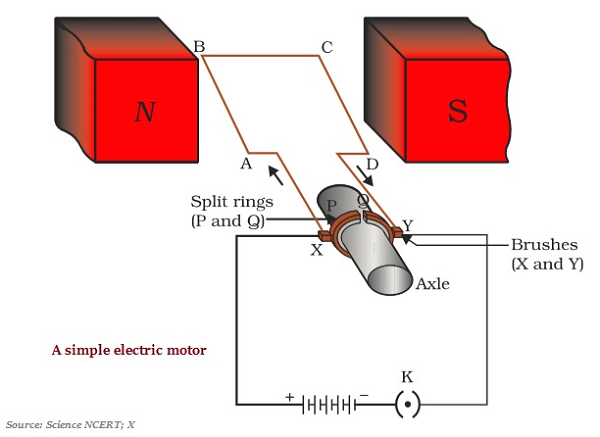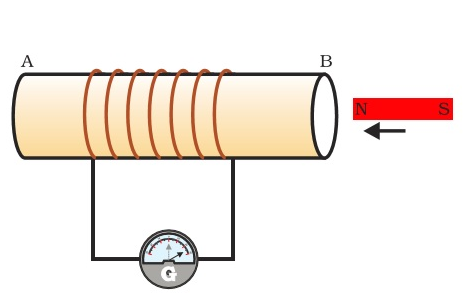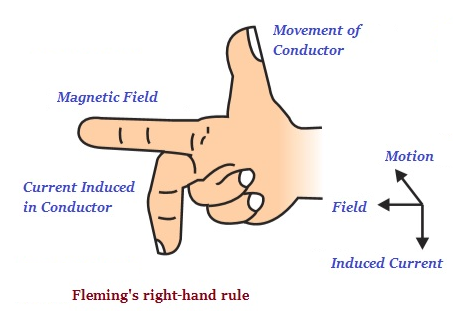
- Physics Notes for UPSC IAS Prelims (Part I)
- Physics - Home
- Physics - Force and Pressure
- Physics - Friction
- Physics - Some Natural Phenomena
- Physics - Motion
- Physics - Force and Laws of Motion
- Physics - Gravitation
- Physics - Mass and Weight
- Physics - Work and Energy
- Physics - Light
- Physics - Reflection and Refraction
- Images Formed by Spherical Mirrors
- Physics - Refraction of Light
- Physics - Spherical Lenses
- The Human Eye & Colorful World
- Refraction of Light Through a Prism
- Physics - Electricity
- Chemical Effects of Electric Current
- Magnetic Effects of Electric Current
- Physics - Electric Motor
- Physics - Source of Energy
- Physics - Sound Part I
- Physics - Sound Part II
- Speed of Sound in Different Media
- Physics - The Solar System
- Physics - Stars and The Solar System
Physics - Electric Motor
Introduction
An electric motor is a rotating device, which is made to convert electrical energy into mechanical energy.
We use dozens of devices in which electric motors are used, such as, refrigerators, mixers, fans, washing machines, computers, etc.

The commercial and high power motors use −
An electromagnet in place of a permanent magnet.
Large number of turns of the conducting wire in the electric current carrying coil; and
A soft iron core on which the coil is properly wound.
The soft iron core (wound with the coil) and the coils, are known as an armature.
Armature has main function to enhance the power of the motor.
Electromagnetic Induction
In 1831, Michael Faraday, an English physicist, had discovered that a moving magnet can be used to generate electric currents.

As shown in the image given above that the moving magnet towards a coil sets up current in the coil circuit, which is indicated and read by deflection in the galvanometer needle.
Because of the changing magnetic field, Electromagnetic induction produces an electromotive force (emf) in a conductor.
A galvanometer is an instrument that is used to detect the presence of a current in a circuit.
Fleming’s Right-Hand Rule
Fleming’s right-hand rule states that “Stretch the thumb, forefinger and middle finger of right hand so that they are perpendicular to each other (see the image given below). If the forefinger indicates the direction of the magnetic field and the thumb shows the direction of motion of conductor, then the middle finger will show the direction of induced current. This simple rule is called Fleming’s right-hand rule.”

Electric Generator
An electric generator is a device that converts mechanical energy into electrical energy.

In an electric generator, mechanical energy is used to rotate the conductor in a magnetic field, as a result of this electricity is produced.
Types of Electric Current
Following are the two types of electric current −
Alternating Current (or AC)
Direct Current (of DC)
The difference between the alternating current and direct current is - the alternating current keeps reversing its direction periodically; whereas, the direct current always flows in one direction.
Most of the electric power stations produce alternating current.
In hour houses, there are different electric appliances, most of run on alternating current.
In our house wiring, fuse is the most important safety device.
Fuse is used to protect the circuits that may damage due to short-circuiting or overloading of the circuits.